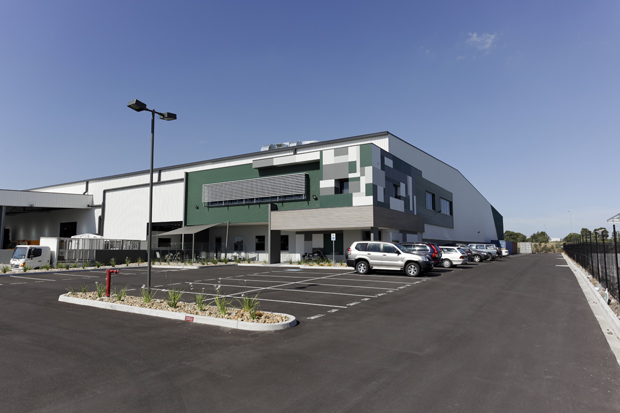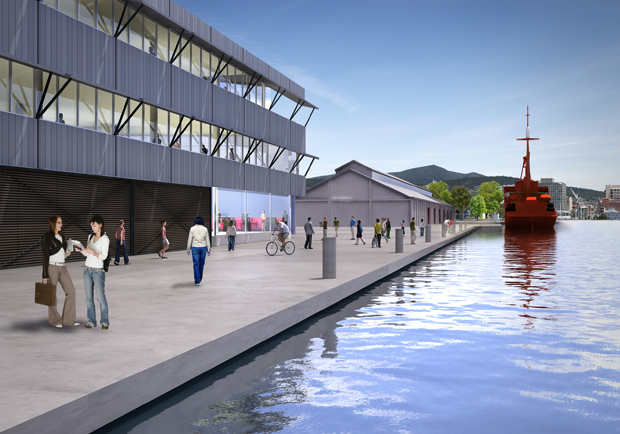Last year, the Green Building Council of Australia stuck 10 candles in a cake and sang "Happy Birthday". Warren McLaren takes a squiz at the GBCA's formative years and what it wants to be when it grows up.
Like most youngsters, the Green Building Council of Australia (GBCA) often seems imbued with an energetic exuberance that leaves more mature organisations in its wake; a boundless energy for getting stuck in and doing stuff.
The GBCA's prime vehicle has been the Green Star certification, whereby buildings are assessed for environmentally beneficial design or construction. In 2003 there was just one form of Green Star rating tool. In 2012, a full dozen of such tools were offered for all manner of structures.
Similarly, Green Star certifications have grown from zero a decade ago, to 610 today. In its first year of operation the GBCA touted 12 members, now it has 750 and counting. To facilitate all this activity, the number of staff has increased from three to 55.
Romily Madew, chief executive of the GBCA, informs us of yet another measure of what it has achieved: "today, Green Star has transformed the urban footprint of our cities. Already, 20 per cent of Australia's CBD office space is Green Star-certified. In some cities this is much higher - 30 per cent in Brisbane and 28 per cent in Adelaide, for instance."
To get a handle on what ecological benefit has actually accrued from 10 years of frenetic action, late last year the GBCA undertook a peer-reviewed study of 428 Green Star Buildings. The findings suggested that annually, such buildings save a cumulative 625,000 tonnes of greenhouse gas emissions and over 3,300,000 kilolitres of water. In more digestible figures, each year Green Star-certified buildings take the equivalent of 172,000 cars off the road, while saving 1320 Olympic swimming pools worth of potable water, and 76,000 household's equivalent in annual electricity. Additionally Green Star-certified buildings have diverted 37,600 truckloads of construction and demolition waste from landfill.
Impressive as these statistics are, many would probably query, "yes, but at what cost to business?"
Madew knows the refrain well.
"Perhaps [the GBCA's] biggest hurdle was to convince the market that there was a business case for green building," she says.

Those days are generally a thing of the past, as the industry went from thinking Green Star benchmarks were too high and costly to deliver, to understanding that they were affordable and achievable.
"Today, a 5 Star Green Star building can cost no more to build than a non-green building," says Madew.
The GBCA cites other research indicating that Green Star-rated buildings deliver a 12 per cent 'green premium' in value and five per cent premium in rent.
"Occupancy rates in green-certified buildings can also be as much as 23.1 per cent higher than their non-rated counterparts."
Studies have also found that when companies complete green renovations of premises, 93 per cent say it's easier to recruit employees, with more than 80 per cent noting increases in staff retention rates.
Additionally, worker productivity increases of up to 15 per cent have been recorded in Green Star workplaces. Improved indoor air quality in retail environments can increase sales by 40 per cent, and students in green-rated schools have achieved 25 per cent higher test scores.
Green Star-certified buildings, on average, even use 50 per cent less electricity than if they had been built to meet minimum industry requirements.
In an era of ever increasing power costs, who wouldn't want to cut their bill in half?
But, before we get too carried away, Madew bring us back to terra firma.
"While Green Star has driven a seismic shift towards sustainable design and construction of our new and refurbished building stock, it has only addressed around two per cent of Australia's built environment," she points out.
Yep, for all its great gusto and stellar statistics, the efforts of the GBCA have, so far, been but a small drop in a large bucket.

Early on, the GBCA identified new buildings and office spaces as one area crying out for green standards and innovation. With positive results on the board from endeavours in those arenas, focus is now shifting to what can be achieved on the broader scale.
In taking on this self-imposed dare of having an even greater impact, the GBCA is deploying a trio of initiatives - continual improvement of the suit of Green Star rating tools, supported by Green Star - Performance and Green Star - Communities.
Madew notes, "'Green Star fatigue' will arise if the industry believes that the rating tool has ceased to evolve, and we want to see continued evolution, continued market transformation and continued capacity-building."
"We've learnt that Green Star must learn to be more adaptive to the market, to the opportunities and challenges within each development, and to be more communicative and collaborative with industry professionals."

The GBCA plans to meet this market need for more tailored solutions by various revolutionary means, such as taking the Green Star rating tools online; delivering a single, streamlined Green Star - Design & As Built rating tool; trialling alternative methods of assessment to ensure a more flexible process; using the Green Star - Custom tool for any project outside the scope of existing Green Star rating tools; plus a raft of other new initiatives.
"In terms of our existing building stock, it's clear that demolishing and rebuilding it to new, environmentally-sustainable benchmarks is not only impractical, it's also counterproductive. Upgrading these buildings makes economic, social and environmental sense."
"Green Star - Performance will provide benchmarks to help building owners and managers set targets, track operational performance and drive ongoing upgrade and retrofit programs," Madew says.
When sister organisation, the US Green Building Council, released its Operations and Maintenance rating tool for existing buildings, it unleashed more certifications in a single year than all the other tools had done in that council's history. At home, the GBCA is expecting a similar impact for Green Star - Performance, which launches as a pilot rating tool this October.
"At the same time," Madew continues, "It's clear that achieving a quantum leap in sustainability requires a shift from a building-by-building approach to a community-wide approach."
This has led to the development of Green Star - Communities, which reaches beyond environmental efficiencies to broader holistic sustainability issues, such as economic prosperity, liveability and health. More than 25 projects, from small inner-city infill developments to large greenfield developments, are working with the GBCA to benchmark their developments - projects which will be home to thousands of people.
In mid 2012, the Rock Development Group (RDG) was first to register a Green Star - Communities PILOT project. Centred around Canberra's Belconnen Fresh Food Markets, the 'loop' is a 40,000sqm precinct of 338 residences and 8575sqm of office space.
RDG are shooting for a 6 Star Green Star - Communities rating for the development, which envisages generating its own power from rooftop solar panels and wind turbines, coupled with geothermal systems to regulate air temperature and deliver heating and cooling. There will be community gardens, electric vehicle recharge points, and a residential car pooling scheme in a community with "all life's necessities within walking distance".
Another Green Star - Communities rating example is Lend Lease's Barangaroo South project, part of the $6 billion Barangaroo urban regeneration development on Sydney Harbour. Home to around 1200 residents, 23,000 office workers and more than 2.9 hectares of public space, Lend Lease is aiming for it to be Australia's first large-scale carbon neutral community.
"There is no doubt that we are facing tough times. This is true for all segments of the economy and all segments of the construction industry. However, we're confident that sustainability is here to stay," Madew says, citing The World Green Building Trends report released this year. The report found that 51 per cent of professional service firms predict they will be dedicated to green building by 2015 - up from 28 per cent in 2012 and just two per cent in 2005.
"In Australia, we're finding that Green Star certifications remain steady, and while the mix of registrations has changed as we've introduced new rating tools, we are confident that the acceleration of green building will continue."

